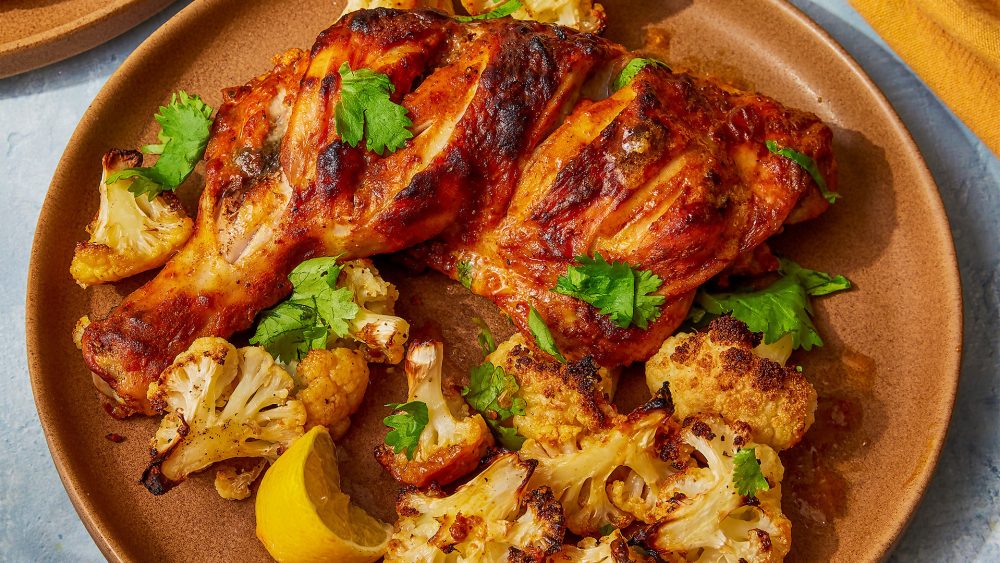The most common format for sheet pan suppers is a protein with a vegetable or two. Simple enough, but it can turn boring real quick, and building a good traybake requires an understanding of a range of ingredients and the rate at which they cook. Traybakes aren’t limited to this format—we have several unorthodox traybakes, including a recipe for traybake chow mein—but it’s a format worth mastering.
Meat and Veggies, on a Single Baking Sheet
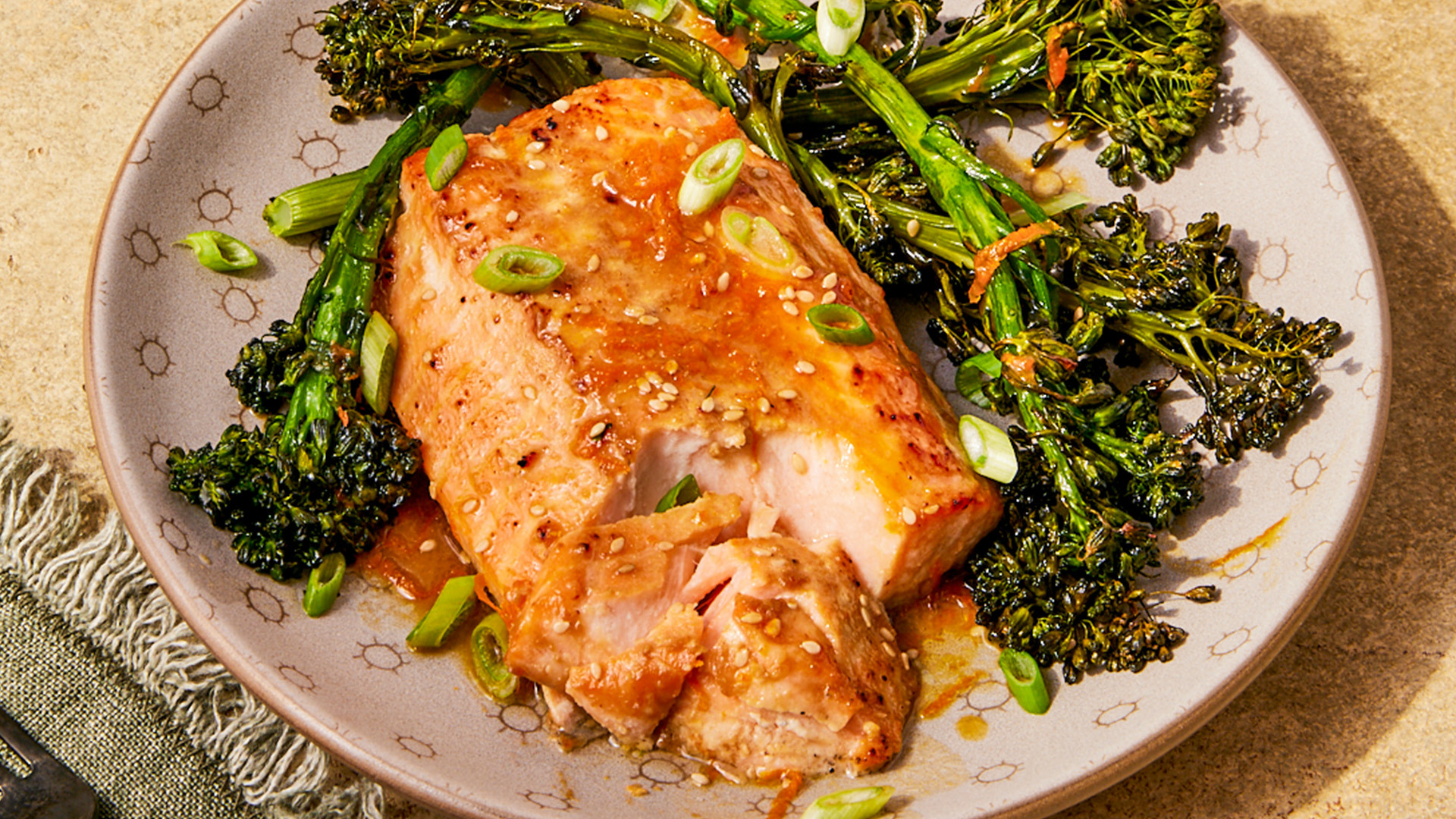
Tough cruciferous vegetables like cauliflower and root vegetables like potatoes need a prolonged stay in the oven to cook through and develop deep, satisfying flavors. Bone-in chicken legs, rather than boneless, skinless breasts, contain all sorts of wonderful fat and connective tissue that benefit from a similarly long cooking time—collagen breaks down into silky gelatin, infusing the meat and rendering it extra juicy. Combining the two just makes sense.
That’s the approach we take in our Tandoori-Inspired Chicken and Cauliflower, a meal of Indian-spiced, crispy-skinned chicken legs and tender cauliflower with caramelized edges. We slash into bone-in chicken parts to allow a seasoned yogurt mixture to really work its way into the meat—the yogurt tenderizes the chicken, helps the seasonings stick and assists with browning.
Other sheet pan meals that take a similar approach include our Mojo Chicken and Sweet Potatoes, which gets a bold lift from a citrusy garlic-herb paste; this Za’atar Chicken with Eggplant, in which we utilize the extended oven time to roast garlic until it’s smooth and spreadable; and our Jerk-Spiced Chicken with Pineapple—the fruit gets lightly caramelized on the sheet pan, cutting through the heat of the chilies.
It is, however, possible to pair sturdy vegetables with delicate proteins, you just have to add them to the baking sheet in stages. In our Honey-Miso Salmon and Broccolini Traybake, the veg gets a head start in the oven while the salmon marinates in a savory-sweet mixture of miso, soy sauce and honey. The fish is added once the broccolini just begins to brown, and cooks until it flakes easily and the vegetable is tender-crisp and lightly charred.
Our Sausage Traybake with Onions and Apples follows a similar format and takes advantage of the pan’s low profile, which facilitates heat circulation for better browning. Onions go into the pan first, followed by the chicken and apples. We then deglaze the sheet pan with hard apple cider, so none of the browned and caramelized bits get left behind. (Did you know you can deglaze a sheet pan? You can! And not enough people do it.)
Traybakes aren’t as limiting as you think
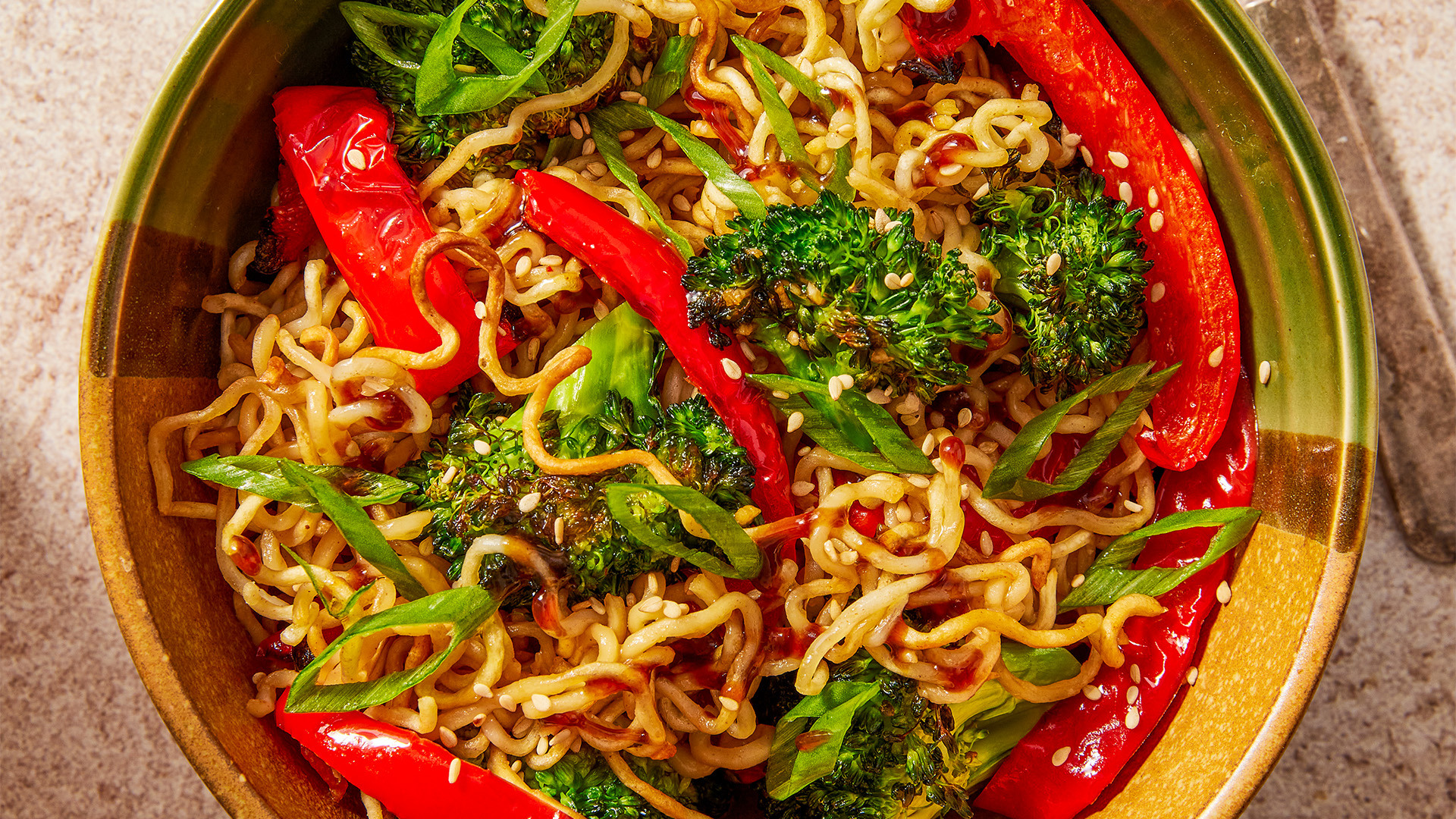
Traybakes aren’t limited to strict protein-and-produce meals. Even chow mein can be made on a single sheet pan. Inspired by a recipe in Hetty McKinnon’s cookbook “To Asia, With Love,” we created an oven-only noodle dish, but we took some liberties, swapping instant ramen for the thin Chinese egg noodles customarily used to make chow mein. The ramen doesn’t require actual cooking—it needs only to hydrate in boiling water for a few minutes. We then mist the softened noodles with oil before oven-frying them alongside broccoli and sweet bell peppers. To finish, we toss everything with a simple blend of oyster sauce, soy sauce and garlic (or ginger), which brings delicious umami, saltiness and sweetness.
Continuing in the takeout theme (and with Hetty’s brilliance), fried rice can also be made on a sheet pan. Not only is it easier than frying it in a skillet, but the pan’s large surface area does a better job of crisping the rice than a small (or even medium) skillet. It’s also a great way to use up a whole jar of kimchi.
Another surprising traybake is tomato sauce with meatballs. Instead of using canned tomatoes, we roast cherry tomatoes with a combination of garlic and harissa until they burst, letting their juices mix with the seasonings to form the sauce, then nestle hand-formed meatballs into the pan. Everything goes back in the oven, uncovered, until the meatballs are well browned. Finish with funky feta and serve with crusty bread for mopping up the sauce.
Develop big flavor in vegetarian dishes
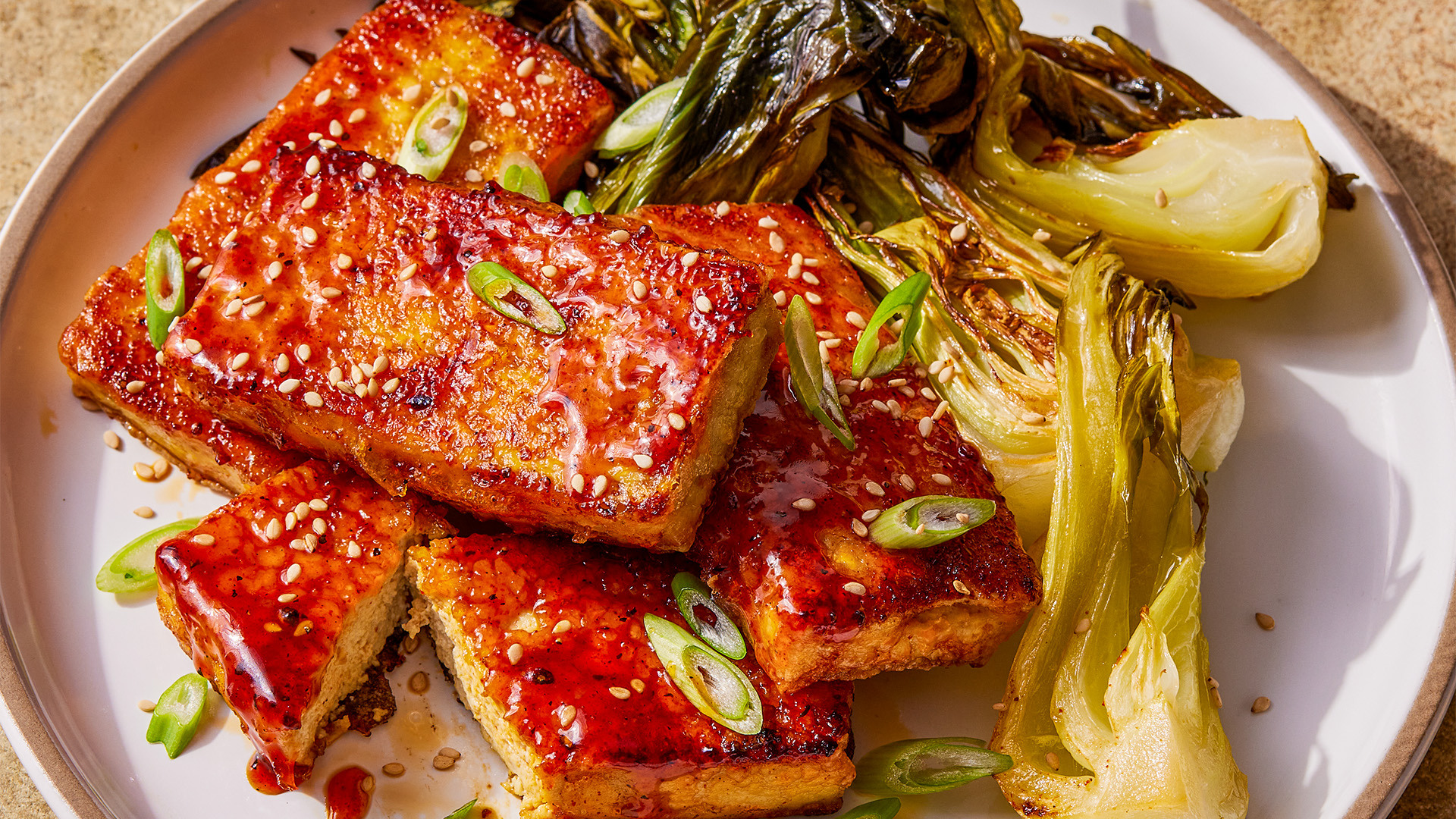
Browning equals flavor and nothing browns quite like a sheet pan, which is why vegetarian traybakes are some of our favorites. In our Gochujang-Glazed Tofu and Bok Choy Traybake, we bake cornstarch-coated tofu in a ripping-hot oven to give it a crisp crust, then brush it with a gochujang-honey glaze, which concentrates and caramelizes. Leafy green baby bok choy joins the tofu midway through; its tender-crisp stems and lightly charred leaves offering lots of textural and flavor contrast to the tofu.
Chickpeas and cauliflower benefit from the traybake treatment in similar ways—cauliflower takes on light charring and becomes supple and tender while chickpeas roast alongside, turning toasty and crisp. A lemony, garlicky yogurt sauce ties everything together, and a spice blend does double duty, seasoning the cauliflower-chickpea mixture as well as the sauce. It’s particularly comforting this time of year.
Sheet pan desserts offer low-effort elegance
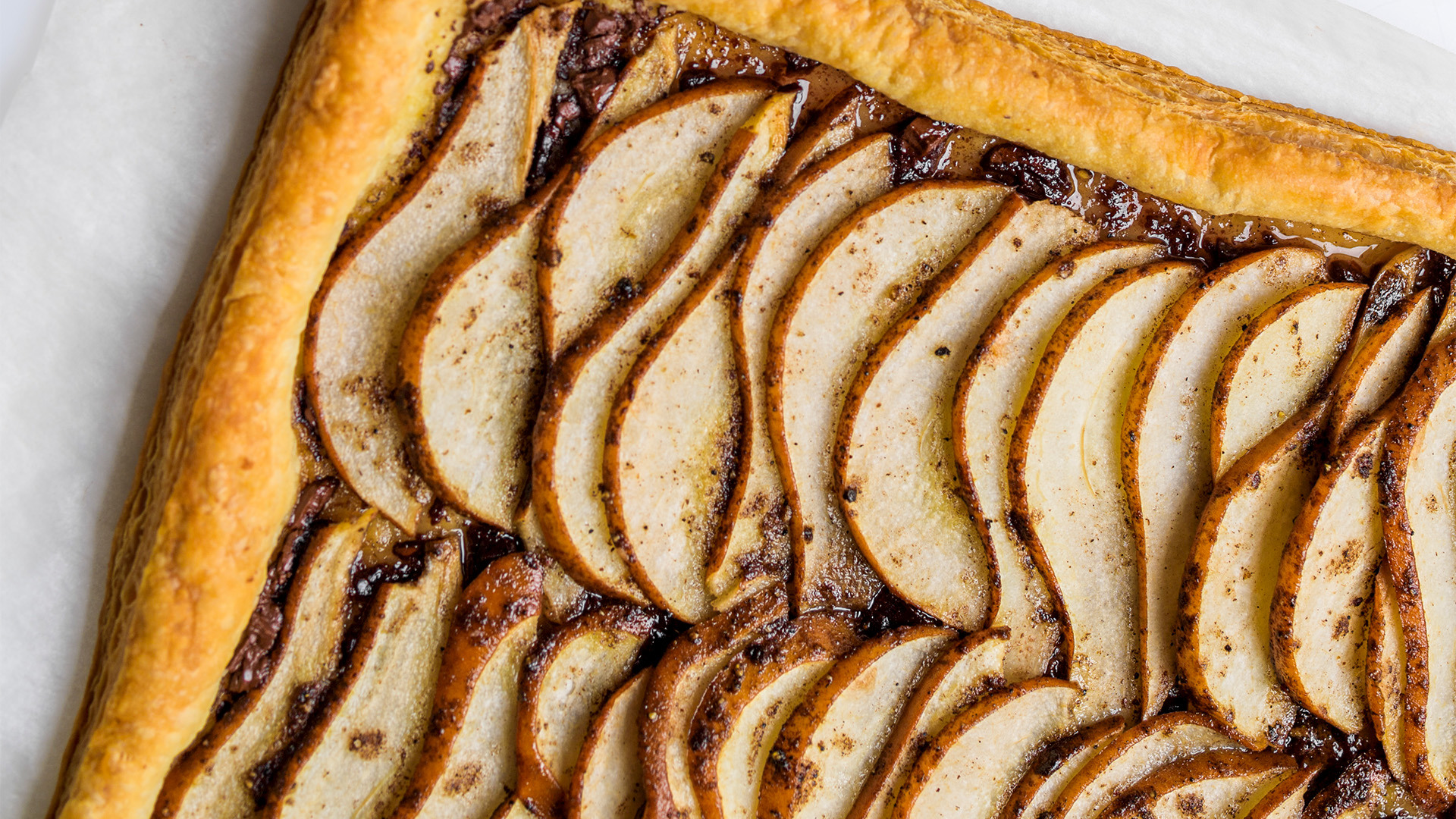
Everyone has used a sheet pan to bake a batch of cookies, but some of our favorite sheet pan desserts, like this Chocolate and Spiced Pear Freeform Tart, use the pan like a sort of large, rectangular pie tin. Even better: We don’t peel the pears. Instead, we toss sliced Bosc pears with a mixture of honey, butter and Chinese five spice powder. The seasoning adds intrigue to the classic pairing of pears and chocolate, while the russet-toned skins contrast nicely against the creamy-white interiors of the fruit.
And while Fregolatta is technically a cookie, there’s no need for rolling, slicing or even scooping. The buttery almond-flecked dough is lightly pressed directly into the pan in an even layer, then baked and broken into crisp, streusel-like shards. Serve pieces of fregolotta alongside coffee, tea or dessert wine, or crumble it over bowls of ice cream.
Join the conversation on Facebook, Instagram, TikTok and Pinterest.
And if you're looking for more Milk Street, check out our livestream cooking classes with our favorite chefs, home cooks and friends for global recipes, cooking methods and more.
